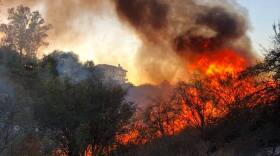A dragonfly of the species Epitheca princeps is a showy creature, with broad, clear wings marked by bold black splotches. But its young have a much more hidden lifestyle.
Dragonfly nymphs, which look nothing like the winged adults, lurk among the stones and silt of waterways, eating aquatic worms and insects. They seem in no hurry to grow up—some take two or more years to become adults.
Their slow development, and big appetites, make the nymphs ideal vessels for studying how pollution accumulates. They’re the object of a study by the National Park Service, that collects the nymphs so their mercury content can be measured.
The study, which enlists citizen scientists, has taken place in sites around the country, including at Bandelier National Monument in New Mexico and Tuzigoot and Montezuma Castle in northern Arizona. Since 2011, more than four thousand volunteer samplers have participated nationwide.
The samples go to a U.S. Geological Survey lab. Results so far have showed that northern Arizona and New Mexico dragonflies had relatively low mercury levels. That’s good news, since mercury can cause nerve damage in people and animals. Much of it comes from the emissions of coal-fired power plants.
A couple sites in southern Utah and Colorado, however, displayed considerably higher mercury levels.
What that means for the health of dragonflies, or the animals that eat them, isn’t yet clear. Still, thousands of volunteers now have first-hand experiences of the places where dragonflies grow up—and what they can tell us about pollution in our world.
For more information see www.nps.gov/articles/dragonfly-mercury-project.htm.









